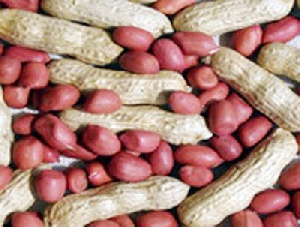Ghana faces a possible ban on groundnuts exported to the EU following high recorded incidence of aflatoxin contamination of the crop yields.
The European Commission recently conducted a thorough examination on vegetables, groundnuts and other cereals produced in Ghana, and found that a large quantity of these produce are vested with high level of aflatoxin, making them unfit for the international market.
Aflatoxin are toxic metabolites produced by certain fungi in and on foods and feeds, which reduces the quality of the host crop and is associated with various diseases -- such as aflatoxicosis in livestock, domestic animals and humans.
Over the years there have been severe mortalities in especially livestock and sometimes illness and death in humans due to Aflatoxin contamination, as a result of which many countries attempt to limit exposure to aflatoxins by imposing regulatory limits on commodities intended for use as food and feed.
Latest figures available indicate that Ghana made US$2.4billion from non-traditional exports, of which groundnuts accounted for US$6.4million in 2013; and government has set an ambitious target to rake in US$5billion from the sector by 2019.
B&FT has gathered any imminent ban of groundnuts could jeopardise government’s hopes of expanding the scope of non-traditional commodities to increase foreign exchange earnings from that sector.
In the quest to help reduce the level of aflatoxin contamination in groundnuts, peanut butter and cereal products to meet the EU technical regulations and standards, the Ghana Export Promotion Authority (GEPA) in collaboration with Trade Relate Assistance and Quality Enabling Programme (TRAQUE)-European UnionAgency, has rolled-out a capacity building project to sensitise players along the value-chain of these crops.
The training programme is being funded by the EU and seeks to train 2,000 stakeholders within Brong Ahafo, Northern, Upper East and Upper West Regions in good agricultural practices, with much emphasis on prevention of and controlling aflatoxin contamination in groundnuts.
The beneficiary trainees, including farmers, processors, traders and agricultural extension officers, will be taken through aspects such as pre-harvest operations; selection of good planting site and seeds; quality assurance and risk management; on-farm and off-farm practices.
Speaking during one of such outreach programmes at Techiman in the Brong Ahafo Region, Stephen Normeshie, General Manager, GEPA, underscored the merits of the capacity building training so as to fully harness economic potentials of groundnuts and cereals to diversify and boost Ghana’s foreign exchange basket.
“The GEPA believes that preventing and controlling fungus contamination has the potential of enhancing quality groundnuts and cereals export to the international markets. This will make it possible to utilise the rich and abundant groundnuts and cereals export resource potentials available in the country.
“Ghana, with its favourable climatic conditions and abundant rich soil, has comparative and competitive advantage in groundnuts and cereals exports, and hence it is well-positioned to take advantage of the international market opportunities to develop the sector,” he said.
Groundnuts production in African countries has over the years fluctuated, but it has never exceeded 8% of world output over the last decade. Yields per hectare are low due to a chain of factors: unreliable rain-pattern, non-irrigated cultures; dominance of traditional and unproductive farming practices; outbreaks of pests and diseases; and the use of low-yielding seed varieties among others.
In the last five years, annual average groundnuts world export has been around 1.2 million tonnes valued at over US$984million, of which nearly two-thirds was produced by developing countries. About 80% of exports consisted of edible groundnut varieties, with the remaining 20% used for crushing.
Business News of Wednesday, 20 May 2015
Source: B&FT













